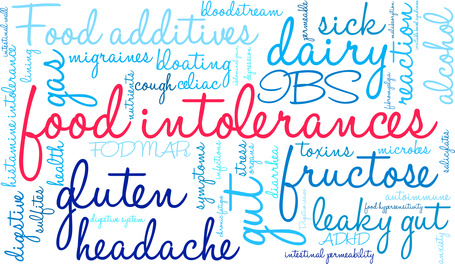Unresolved digestive problems

There’s a widely unknown diet secret that keeps people chronically tired, suffering from stomach discomfort, IBS, even contributing to weight gain. It’s called the low FODMAP diet.
You go to the doctor for answers, but after lab work the doctor tells you, “You’re just fine. All your lab work is normal.” A dismissive attitude by the doctor can be very frustrating. You know you’re not fine, something is wrong… You feel fatigued, are having a hard time losing weight, or have digestive discomfort, and you can’t figure it out.
My own story; I used to have constant stomach discomfort, however the discomfort wasn’t bad enough that I needed to see a doctor, but it was noticeable. I tolerated it for years. One day I was reading an article in a nutrition magazine that mentioned something called low FODMAP diet. After researching into it I applied some low fodmap principles to my diet and immediately noticed a difference.
What is a FODMAP?
FODMAPs are a collection of short chain carbohydrates and sugar alcohols found naturally in foods, or as additives. FODMAP stands for Fermentable Oligosaccharides, Disaccharides, Monosaccharides, and Polyols, in other words, fermentable starches. They are poorly absorbed by the gastrointestinal tract and can easily be fermented by gut bacteria. Eating high FODMAP foods casues the bad bacteria in your small intestine begin to rapidly multiply as is feeds on these foods, out numbering the healthy bacteria. This leads to SIBO (Small Intestine Bacterial Overgrowth), which when gone unchecked can lead to leaky gut syndrome. This can cause unexplained weight gain, chronic fatigue, brain fog, and digestive discomfort ranging from mild to a full-blown autoimmune condition like Crohn’s disease.
Who could benefit from a low FODMAP diet:
- Those with persistent gastrointestinal symptoms
- Those with IBS
- Autoimmune disease sufferers
- Those with chronic fatigue
- Those who are having difficulty losing weight, despite proper diet and exercise adherence.
High FODMAP foods are:
- Fructose: some fruits such as apples, dates, mangos, and peaches, honey, high fructose corn syrup, etc
- Lactose: dairy products
- Fructans: Wheat, rye, barley, onion, garlic, etc
- Galactans: legumes
- Polyols: Sweeteners and stone fruits like avocados, apricots, cherries, peaches, plums, and nectarines
Low FODMAP foods include:
Lactose-free dairy products, meat, fish, eggs, bananas, blueberries, gluten free grains, veggies such as zucchini, spinach, carrots, and potatoes, almonds, walnuts.
A low FODMAP diet may reduce symptoms considerably. It is often used for natural treatment of IBS but it can also mean the end of fatigue, weight loss or gain, headaches, and digestive discomfort.
A tip to adhering to a low FODMAP diet are to review full food lists. Here’s a link to one I like: Stanford health care low FODMAP diet, then grocery shop for the low FODMAP items. Avoid the high FODMAP items as much as possible for 2-3 weeks and see if you feel better. It is recommended to avoid garlic and onions entirely, as these two are the worst offenders.
The good news is, eliminating these foods or even cutting back might have you feeling better in just a few days!
Like Amanda Comstock / Park City Personal Trainer on facebook for more great health and fitness articles
